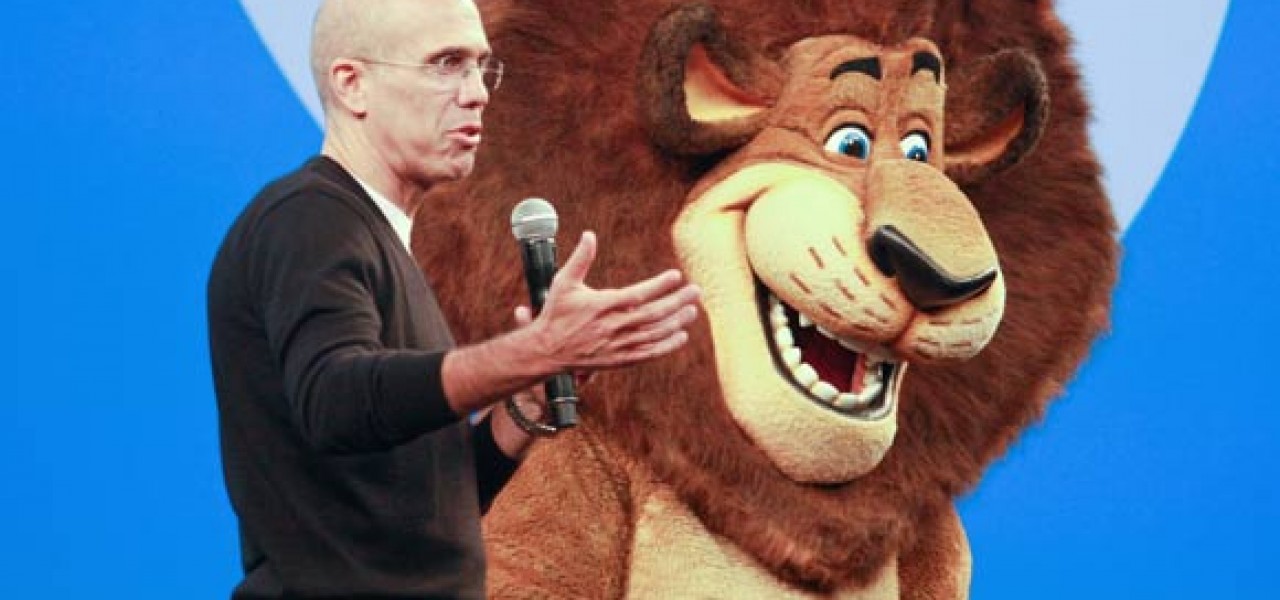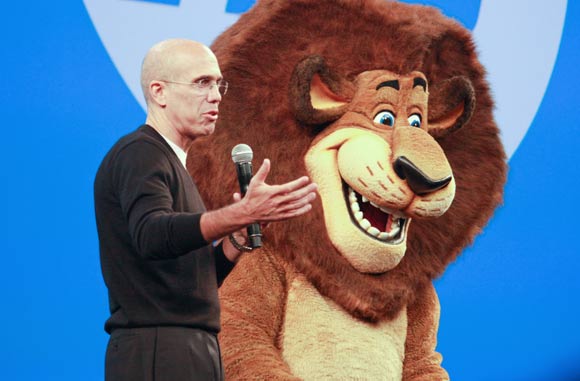

“Movies Are Not A Growth Business,” Admits Movie Studio Owner Jeffrey Katzenberg

In 2011, Jeffrey Katzenberg proclaimed that moviegoing audiences would embrace 3-D and would continue to attend theaters despite higher ticket prices. Three years later, it’s obvious that his prediction was a little off.
In 2014, the percentage of moviegoers who choose to watch a film in 3-D will be at its lowest point since 3-D was reintroduced in 2008, and overall movie attendance has crumbled in the United States. In fact, over 200 million less movie tickets were sold in 2013 than in 2003. While it’s true that global box office revenue continues to grow, that has less to do with 3-D and more to do with the vast amount of new screens that have been built in countries like China, which previously did not have screen saturation.
Yesterday, at the Milken Global Conference in Beverly Hills, Katzenberg admitted that 3-D was essentially a stopgap measure to ease the eroding theatrical market. “TV is a growth business. Short form content is a growth business,” Katzenberg said. “Movies are not a growth business.” That’s a bit of a problem because Katzenberg runs a movie studio. And it’s doubly a problem for DreamWorks Animation, which has released 28 animated movies in 16 years, the most that any studio has ever released in such a brief span of time.
So, since that whole 3-D thing didn’t work out quite as planned, what will replace the theatrical experience? Katzenberg has some new ideas on how the movie market will evolve over the course of the next decade:
“I think the model will change and you won’t pay for the window of availability. A movie will come out and you will have 17 days, that’s exactly three weekends, which is 95% of the revenue for 98% of movies. On the 18th day, these movies will be available everywhere ubiquitously and you will pay for the size. A movie screen will be $15. A 75” TV will be $4.00. A smartphone will be $1.99. That enterprise that will exist throughout the world, when that happens, and it will happen, it will reinvent the enterprise of movies.”
During the conference, Katzenberg also offered the most succinct explanation for why DreamWorks has pushed aggressively in non-film directions, such as buying online channels, entering the world of character rights’ management, building entertainment complexes, and making deals for digital TV production. “I wish it was an offense move,” he said, “[but] diversity is essential for us if we want to grow the business. It can’t come fast enough.”
